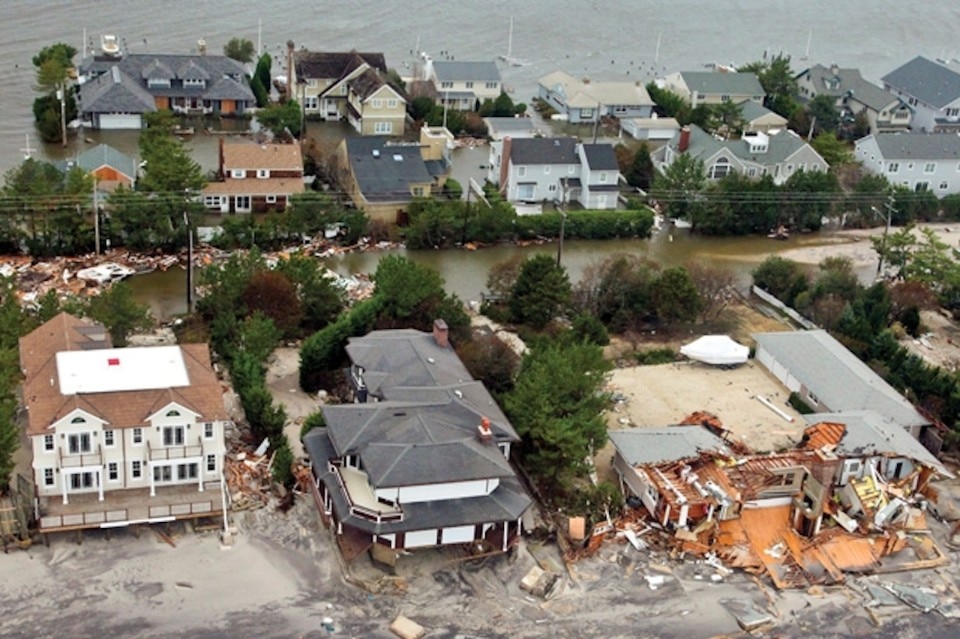Despite covering only around one per cent of the Earth's surface, cities produce around 80% of world economic output [1], thanks to their high concentration of human capital and ideas: more than half of the world’s population currently lives in cities, and this is expected to grow to 68% by 2050 [2].
Many cities are low-lying or located in coastal areas, and therefore particularly exposed to climate and disaster risks such as storms and sea level rise. Urbanization is also known to alter local environmental conditions, for example by generating ‘urban heat islands’ (UHIs), a phenomenon in which surface temperatures are higher in urban areas than in surrounding rural areas. The impact of UHIs is likely to amplify the effects of global warming and make cities more vulnerable to climate change [3].
Cities also directly contribute to climate change: to sustain their economic activity, cities consume about 75 per cent of global primary energy [4] and account for more than 70% of all global CO2 emissions each year [5]. As cities grow, so will their contribution to global emissions.
Urban design – the sprawl of cities and their density – and mobility – how people move about the city – are crucial elements of how urbanisation influence energy consumption and therefore CO2 emissions.
Design and mobility are related: as city density increases, people tend to use more public transportation and non-motorized forms of transport, lowering energy use per capita and thus reduce transport-related emissions.
To transform into low-carbon cities, rapidly growing cities need to adopt more compact living forms, incorporate higher densities and become smarter, by harnessing the digital revolution to improve transport networks, for example through urban shared-mobility schemes, thus improving air quality and reducing congestion.
Cities have much to gain from embracing the low-carbon agenda: emission and pollution levels directly affect the quality of life in cities, and determine cities’ competitiveness in attracting human and financial capital, and therefore generating jobs and prosperity: the costs of delaying climate action are very high and the co-benefits of mitigation and adaptation policies are substantial [6].
Co-benefits of adaptation policies in urban areas include the creation of more comfortable buildings and healthier environments, thus reducing the vulnerability for low-income groups to natural disasters; co-benefits of mitigation policies to reduce greenhouse gases in urban areas include improved air quality and lower risk of respiratory disease.
As urban populations grow, significant physical capital investment on urban infrastructure will be required to meet demand for city living. Decisions about types and location of infrastructure will determine cities’ future resilience to the impact of climate change.
Cities have authority over many aspects of urban design, such as land-use, transport, planning, waste management, and water services, and are able to make decisions about infrastructure projects. Moreover, local authorities are in close contact with citizens and businesses and can influence local behaviours. They can also act as laboratories for policies that can be scaled up at the national level. For these reasons, cities are well positioned to develop climate mitigation and adaptation policies [7].
To guide local authorities towards better climate policies, a number of research gaps need to be filled: this include providing better urban data and understanding the interactions between climate and urbanization [8].
City authorities also need to ensure their mitigation and adaptation strategies all well integrated, while taking into account the carbon lock-in risks, i.e. those path dependencies that might constrain the effectiveness of mitigation and adaptation actions [9, 10]. Finally, unlike global mitigation strategies, the effects of urban climate policies are largely unknown and more evidence is needed to assess their outcomes [11].
The views expressed in this article are those of the author, and not necessarily those of the Bank of England or its committees
- 1:
- Estrada, F., Botzen, W. and R. S. J. Tol (2017) ‘A global economic assessment of city policies to reduce climate change impacts,’ Nature Climate Change, 7:403 – 408
- 2:
- United Nations (2018) Revision of World Urbanization Prospects
- 3:
- Revi, A., Satterthwaite, D.E., Aragón-Durand, F., Corfee-Morlot, J., Kiunsi, R. B. R., Pelling, M., Roberts, D.C. and W. Solecki, 2014: Urban areas. In: Climate Change 2014: Impacts, Adaptation, and Vulnerability. Part A: Global and Sectoral Aspects. Contribution of Working Group II to the Fifth Assessment Report of the Intergovernmental Panel on Climate Change [Field, C.B., V.R. Barros, D.J. Dokken, K.J. Mach, M.D. Mastrandrea, T.E. Bilir, M. Chatterjee, K.L. Ebi, Y.O. Estrada, R.C. Genova, B. Girma, E.S. Kissel, A.N. Levy, S. MacCracken, P.R. Mastrandrea, and L.L. White (eds.)]. Cambridge University Press, Cambridge, United Kingdom and New York, NY, USA, pp. 535-612
- 4:
- UN Habitat https://unhabitat.org/urban-themes/energy/
- 5:
- World Bank (2019) ‘Four things you should know about climate smart cities’
- 6:
- World Bank and European Bank for Reconstruction and Development (2010) ‘Cities and climate change: an urgent agenda.’
- 7:
- OECD (2014) ‘Cities and climate change. Policy perspectives.’
- 8:
- Bai, X., Dawson, R. J., Ürge-Vorsatz, D., Delgado, G. C., Salisu Barau, A., Dhakal, S., Dodman, D., Leonardsen, L., Masson-Delmotte. V., Roberts, D.C. and S. Schultz (2018) ‘Six research priorities for cities and climate change,’ Nature, 555(7694):23 – 25
- 9:
- Ürge-Vorsatz, D., Rosenzweig, C., Dawson, R. J., Sanchez Rodriguez, R., Bai, X., Barau, A. S., Seto K. C. and S. Dhakal (2018) ‘Locking in positive climate responses in cities,’ Nature Climate Change, 8:174 – 185
- 10:
- Seto, K. C., Davis, S. J., Mitchell, R. B., Stokes, E. C., Unruh, G. and D. Ürge-Vorsatz (2016) ‘Carbon Lock-In: Types, Causes, and Policy Implications,’ Annual Review of Environment and Resources, 41(1):425 – 452
- 11:
- Estrada et al, 2017



